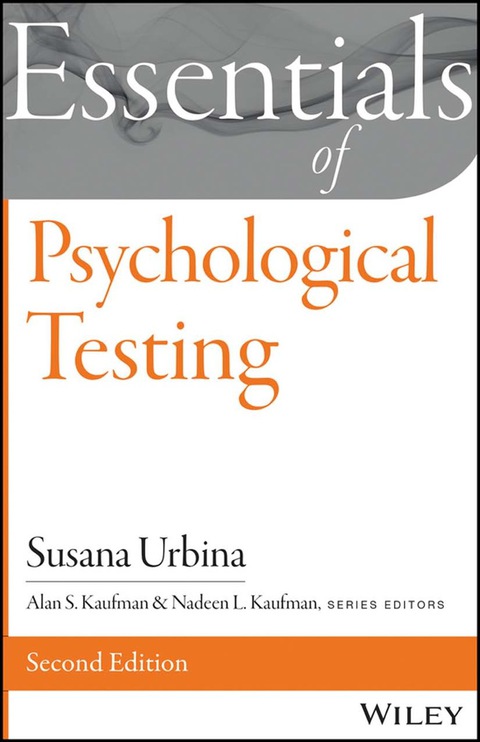Description
Efnisyfirlit
- Contents
- Series Preface
- Preface to the Second Edition
- Acknowledgments
- One: Introduction to Psychological Tests and Their Uses
- PSYCHOLOGICAL TESTS
- Other Terms Used in Connection With Tests and Test Titles
- PSYCHOLOGICAL TESTS AS TOOLS
- Testing Standards and Guidelines
- PSYCHOLOGICAL TESTS AS PRODUCTS
- HISTORY OF PSYCHOLOGICAL TESTING
- Antecedents of Modern Testing in the Occupational Realm
- Antecedents of Modern Testing in the Field of Education
- Antecedents of Modern Testing in Clinical Psychology
- Antecedents of Modern Testing in Scientific Psychology
- The Rise of Modern Psychological Testing
- OTHER DEVELOPMENTS IN PSYCHOLOGICAL TESTING
- Standardized Testing in Educational Settings
- Personnel Testing and Vocational Guidance
- Clinical Testing
- CURRENT USES OF PSYCHOLOGICAL TESTS
- Decision Making
- Psychological Research
- Self-Understanding and Personal Development
- PSYCHOLOGICAL ASSESSMENT VERSUS PSYCHOLOGICAL TESTING
- Steps in the Assessment Process
- TEST USER QUALIFICATIONS
- SOURCES OF INFORMATION ABOUT TESTS
- Internet Resources
- Print Resources
- Two: Essential Statistics for Testing
- MEASUREMENT
- VARIABLES AND CONSTANTS
- THE MEANING OF NUMBERS
- Nominal Scales
- Ordinal Scales
- Interval Scales
- Ratio Scales
- Why Is the Meaning of Numbers Relevant to Psychological Testing?
- What Can We Conclude About the Meaning of Numbers in Psychological Measurements?
- TYPES OF STATISTICS
- Descriptive Statistics
- Numerical Description of Data
- The Importance of Variability
- THE NORMAL CURVE MODEL
- Definition
- Properties of the Normal Curve Model
- USES OF THE NORMAL CURVE MODEL
- Descriptive Uses
- Inferential Uses of the Normal Curve Model
- Estimating Population Parameters
- Nonnormal Distributions
- ESSENTIALS OF CORRELATION AND REGRESSION
- Linear Correlation
- Scatterplots
- The Discovery of Regression
- CORRELATION COEFFICIENTS
- Pearson Product-Moment Correlation Coefficient
- CONCLUSION
- Three: Essentials of Test Score Interpretation
- RAW SCORES
- FRAMES OF REFERENCE FOR TEST SCORE INTERPRETATION
- NORM-REFERENCED TEST INTERPRETATION
- Developmental Norms
- Within-Group Norms
- Scores Used for Expressing Within-Group Norms
- INTERTEST COMPARISONS
- Equating Procedures
- Item Response Theory (IRT)
- Test Revisions
- CRITERION-REFERENCED TEST INTERPRETATION
- Varieties of Criterion-Referenced Test Interpretation
- Testing Knowledge of Content Domains
- Performance Assessment
- Predicting Performance
- Relationship Among the Frames of Reference
- Criterion-Referenced Test Interpretation in Clinical Assessment
- Item Response Theory as a Basis for Combining Frames of Reference
- Social Considerations in Norm- and Criterion-Referenced Testing
- Four: Essentials of Reliability
- TRUTH AND ERROR IN PSYCHOLOGICAL MEASUREMENT
- The Concept of the True Score in Individual Data
- True Scores in Group Data
- THE RELATIVITY OF RELIABILITY
- A Note About Truth and Error
- SOURCES OF ERROR IN PSYCHOLOGICAL TESTING
- Interscorer Differences
- Time Sampling Error
- Content Sampling Error
- Interitem Inconsistency
- Content Heterogeneity
- Time Sampling and Content Sampling Error Combined
- RELIABILITY IN TEST USE
- Reliability Considerations in Test Selection
- Evaluation of Error From Multiple Sources
- The Item Response Theory Approach to Reliability
- RELIABILITY CONSIDERATIONS IN TEST INTERPRETATION
- Quantifying Error in Test Scores: The Standard Error of Measurement
- Interpreting the Significance of Differences Between Scores
- The Relationship Between Reliability and Validity
- CONCLUSION
- Five: Essentials of Validity
- HISTORICAL PERSPECTIVES ON VALIDITY
- The Classic Definition of Validity
- CURRENT PERSPECTIVES ON VALIDITY
- The Integrative Function of Constructs in Test Validation
- SOURCES OF VALIDITY EVIDENCE
- Evidence Based on Test Content
- Evidence Based on Response Processes
- Evidence Based on Internal Structure
- Evidence Based on Relations to Other Variables
- Consequences of Testing
- CONCLUDING COMMENTS
- Six: Essential Test Item Considerations
- THE CONTEXT OF ITEM ANALYSIS: TEST DEVELOPMENT
- Steps in the Test Development Process
- TEST ITEM TYPES
- Selected-Response Items
- Constructed-Response Items
- CLASSICAL METHODS OF ITEM ANALYSIS
- Quantitative Methods of Item Analysis
- Item Difficulty
- Item Validity
- Combining Item Difficulty and Item Discrimination
- ITEM RESPONSE THEORY
- Classical Test Theory Versus Item Response Theory
- Essential Features of Item Response Theory
- Item Fairness
- Qualitative Analysis of Item Bias
- Quantitative Analysis of Item Bias
- Assessing Differential Item Functioning
- EXPLORATIONS IN ITEM DEVELOPMENT AND SCORING
- Recent Developments in Item Generation
- Automated Scoring
- Seven: Essentials of Ethical Test Use
- SOURCES OF INFORMATION ON ETHICAL USE OF TESTS
- Standards for Educational and Psychological Testing
- Additional Resources
- ESSENTIALS OF TEST SELECTION
- To Use or Not to Use (Psychological Tests), That Is the (First) Question
- Test Utility
- Other Assessment Tools
- Searching for and Evaluating Tests
- ESSENTIALS OF TEST ADMINISTRATION AND SCORING
- Preparing the Testing Environment
- Preparing the Test Taker
- Preparation of the Examiner
- Test Administration in the Digital Age
- ESSENTIALS OF TEST SCORE INTERPRETATION AND REPORTING
- A Particular Perspective on Test Interpretation
- Communicating Test Results and Assessment Findings
- Safeguarding Test Data
- CONCLUSION
- Appendix A: Commercially Available Tests Mentioned in the Text
- Appendix B: Internet Addresses of Test Publishers and Distributors
- Appendix C: Table of Areas and Ordinates of the Normal Curve
- References
- Index
- About the Author
- End User License Agreement






Reviews
There are no reviews yet.